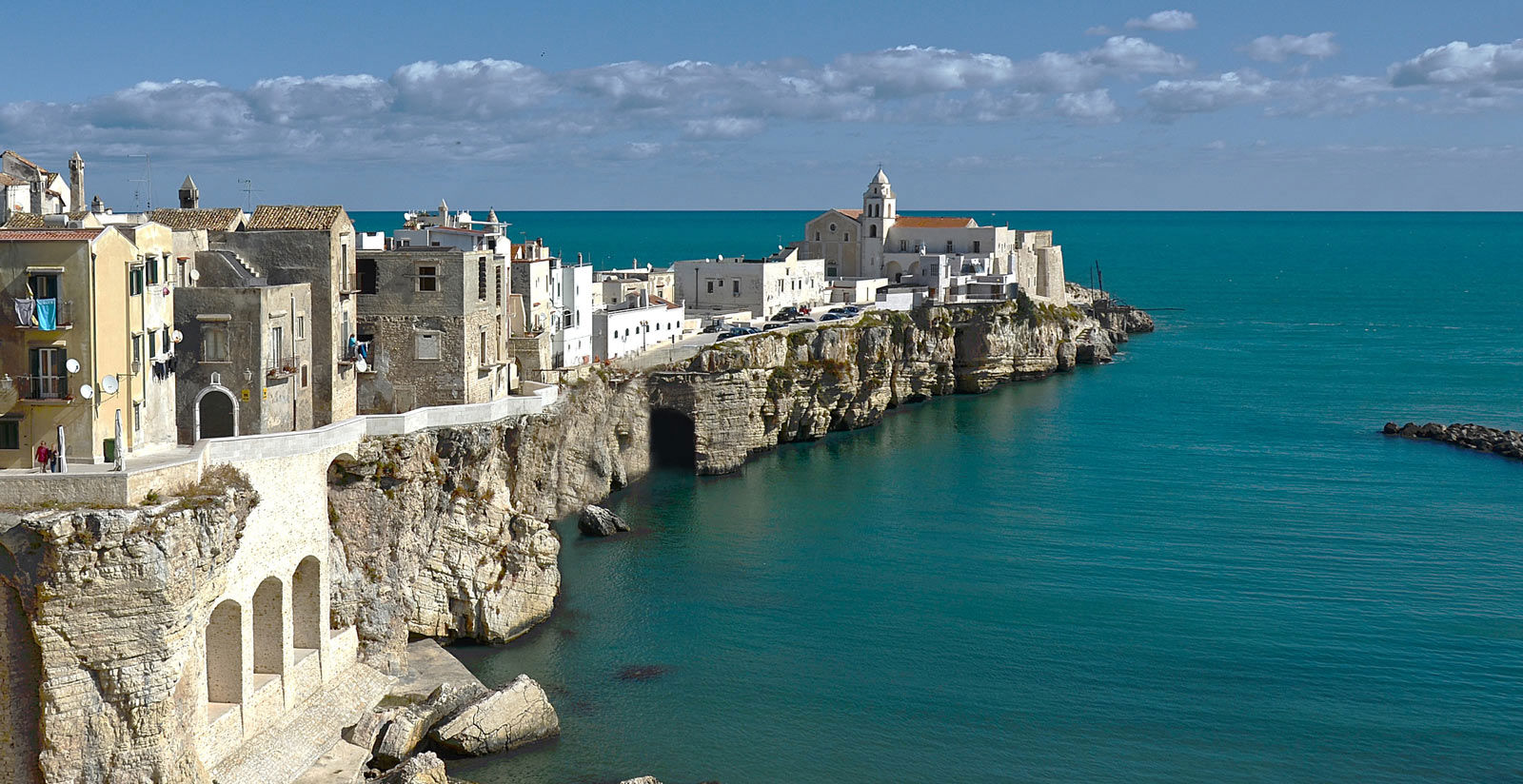Gargano, also known as the Spur of Italy, is a sub-region of Italy that coincides with the Gargano promontory that stretches out in the northern part of Puglia and corresponds to the western part of the province of Foggia. It is completely surrounded by the Adriatic Sea except to the west where it borders with the Tavoliere plains.
The region includes the Gargano National Park.
Religious architecture
Interior of Abbey of Monte Sacro
Abbey of Calena (or Kàlena) (Peschici), built in the 5th century AD, it is the oldest abbey in Italy, a national monument since 1951. Despite being in a decent state of repair it has been abandoned and is in need of urgent restoration works.
Abbey of Monte Sacro
Abbey of Pulsano (Monte Sant'Angelo), a monastic complex built in 591 AD
Abbey of San Pietro in Cuppis (Ischitella, dating back to the 10th century AD)
Abbey of Siponto (Manfredonia)
Abbey of Santo Stefano alla Sperlonga, (Mattinata)
Abbey of Santa Maria a Mare (Tremiti Islands), founded in the 3rd century AD
Churches, convents and sanctuaries.
Basilica of San Pio in San Giovanni Rotondo
Basilica of Santa Maria Maggiore in Siponto (Manfredonia), dating back to the 6th century AD
Basilica of Padre Pio in San Giovanni Rotondo. Designed by Renzo Piano, it houses interesting sculptures by Arnaldo Pomodoro
Church of Santa Maria (Devia), (San Nicandro Garganico), one of Puglia’s Romanesque treasures, with valuable frescoes dating back to the 12th century AD
Cathedral of Manfredonia, dating back to 1300, destroyed and rebuilt in 1700
Sanctuary of Madonna della Libera (Rodi Garganico, dating back to the 15th century).
Sanctuary of San Michele Arcangelo (Monte Sant'Angelo), built during the 5th century AD and the centre of the Gargano’s age-old cult
St. Michael Sanctuary of Santa Maria di Stignano: Located along the ancient Via Langobardorum, it is one of the first sanctuaries dedicated to Our Lady in the Foggia area and one of the most noteworthy pieces of architecture from the 1500s.
Convent of San Matteo (San Marco in Lamis), an impressive building housing an enormous library.
Civilian Architecture
Norman-Aragonese Castle of San Nicandro Garganico
Palaces
Palazzo Fioritto (San Nicandro Garganico)
Palazzo della Bella (Vico del Gargano)
Military architecture
Castello di Monte Sant'Angelo, dating back to the 9th century AD
Norman-Aragonese Castle of San Nicandro Garganico
Swabian-Angevin-Aragonese Castle of Manfredonia
Castel Pagano (Apricena, an impressive building from the 10th century AD that dominates a village abandoned towards the end of the 1700s
Coastal towers
Torre dei Preposti (San Menaio), Torre Calarossa and Torre Mileto (San Nicandro Garganico) and another 23 coastal towers found in the Gargano region
Food and wine
Typical dishes
The Gargano cuisine offers rich and tasty dishes yet at the same time simple and genuine. An all-important ingredient of many dishes is bread, above all in the form of toasted bread (bruschetta), topped with olive oil and tomatoes, onion and oregano. Appetisers are fish-based: the specialities include fragagghiamme made using small raw fish.
Vegetables, expertly prepared, form the base of delicious soups. Bread is the star of soups with pancotto, seasoned with oil and accompanied by wild vegetables such as rocket and potatoes. Soup made from wild Swiss chard, served with a broad bean puree, and minestra maritata made from endive, Swiss chard and celery, cooked in a meat broth are also extremely tasty. Tiella, made from potatoes mixed with pecorino cheese and breadcrumbs, is another vegetable-based dish.
The simple yet tasty first courses serve up all the colours and fragrances of the Mediterranean tradition. Homemade pasta is quite delicious such as cecatelli served with a fresh tomato sauce, or strascinate, a type of orecchiette, flavoured with wild fennel, potatoes and rocket, and fusilli, tagliolini and laganelle are all quite wonderful. Pulse-based first course are also a gourmet’s delight such as the guaranteed winning combination of pasta and beans.
The typical second courses of the Gargano area include more robust dishes such as sausages, capocolli, soppressate and torcinelli (all cold meats). The traditional Easter dishes include the appetiser ‘beneditte’ comprising hard-boiled eggs, salami, cheese and sliced oranges, and French horn mushrooms with lamb and eggs. Lastly the delicious olive oil made by local olive growers is a must at all meals.
Wines
Grapes are a necessary feature of the Gargano area, characterised by a marked Mediterranean bio-diversity, even if wine production in the area is only a niche among the area’s farming activities. In the past, vines represented an important economic resource, the most sought-after wine of the Gargano area was Moscato, served in the Bourbon household. Grape varieties to be remembered include the so-called 'Vini di Vico' (the red-grape Macchiateli, Vino d'Aneli, Vino di Mastrociani and Pampanone; and the black-grape Nardobello), while others include the 'Vini di Monte Sant'Angelo' (the red Neretto, one of the oldest and most definitely autochthonous varieties).







